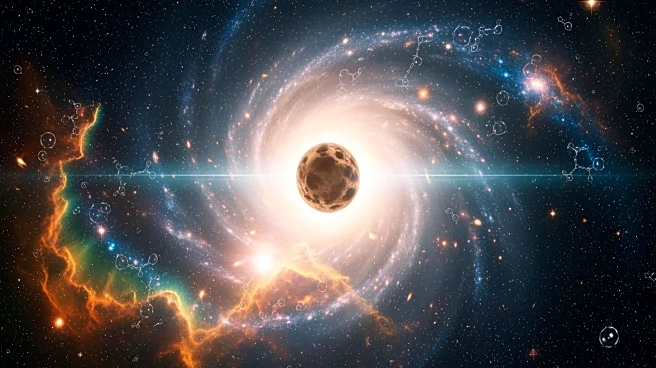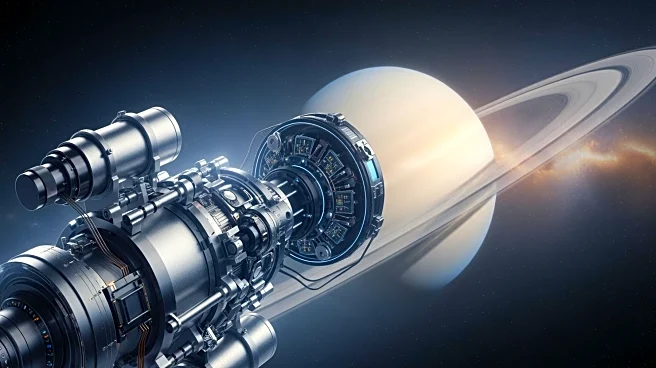What's Happening?
NASA's James Webb Space Telescope has detected large organic molecules frozen in ice around a forming star in the Large Magellanic Cloud, a galaxy neighboring the Milky Way. Using the telescope's Mid-Infrared
Instrument, researchers identified five carbon-based compounds, including methanol, ethanol, methyl formate, acetaldehyde, and acetic acid. This discovery marks the first time these compounds have been observed in ice outside the Milky Way.
Why It's Important?
The detection of complex organic molecules in a galaxy with low metallicity suggests that the building blocks of life may have formed much earlier in the universe than previously thought. This finding expands the understanding of cosmic chemistry and the conditions under which life could potentially emerge. It also opens new avenues for research into the origins of life and the possibility of life existing elsewhere in the universe.
What's Next?
Researchers plan to extend their study by examining more protostars in both the Large and Small Magellanic Clouds to determine the prevalence of these molecules. This ongoing research could provide further insights into the chemical processes that occur in different galactic environments and contribute to the understanding of life's potential emergence in the universe.
Beyond the Headlines
The discovery of organic molecules in a harsh galactic environment challenges existing theories about the conditions necessary for life to form. It suggests that life’s chemical ingredients can endure through planetary formation processes, potentially leading to the emergence of life under a wider range of conditions than previously considered.











